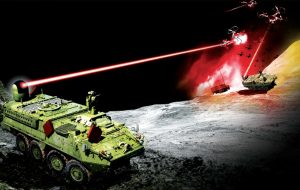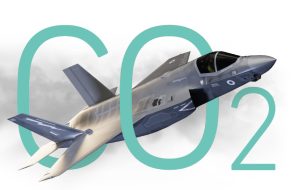Most international conflicts are often attributed to geopolitics, as countries strive to enhance their strategic interests and protect their national security in a world of limited resources. Sacred places, ideas, and ideologies have also frequently been key drivers of geographically-based conflicts.
A prime example of this is the Middle East region, which has witnessed various types of conflicts, including the recent Iran-Iraq War, the Iraqi invasion of Kuwait, the Second Gulf War, as well as the civil wars in Syria, Yemen, and Libya following the so-called “Arab Spring.” Today, the structure of international relations in the Middle East is undergoing profound transformations, some of which can be attributed to three significant global experiences: the Arab Spring (2011), the COVID-19 pandemic (2019), and the Russian-Ukrainian war (2022). Others can be attributed to global geostrategic shifts, such as the transition from a “Globalized World” to a “Buffered World” and the shifting of geopolitical environments, rife with conflicts and turmoil, to new regions of the world, as well as the decline of the Western governance model and the relocation of comprehensive power sources to Asia in a world transitioning to a multipolar system. This study aims to shed light on the most significant geopolitical transformations in the Middle East and analyze their impact on military power balances in this region.

Key Geopolitical Transformations in the Middle East and Their Sustainability:
1- Seeking de-escalation or crisis minimization: Despite the Sudanese case, for the first time in centuries, the Middle East is witnessing a policy of minimizing its chronic problems and increasing the chances of resolving its ongoing conflicts. Despite the state of conflict, which has been the hallmark of the political and security landscape of the region from 1948, through 1979 to 2011, The Abraham Accords, the outcomes of the Al-Ula Summit, the Arab-Turkish rapprochement, and the Saudi-Iranian understandings might lead the region to a peace similar to the Peace of Westphalia in 1648, which ended the era of religious, sectarian, and denominational conflicts in Europe. Thus, the Middle East might witness a case similar to Eastern Westphalia, despite the expected waves of tension worldwide. Through this, the region can establish respect for the sovereignty of states, non-interference in their internal affairs, and separate religion from political conflicts between countries. This would help reduce problems, turmoil, and risks among regional states while increasing the pace of prosperity and development in the region, potentially affecting the future resolution of conflicts in the region, and leading to positive shifts in mitigating or resolving them.
2- Relaying on cooperation and communication for security: Traditional security approaches have been based on defence, which involves identifying potential enemies, assessing threats, and creating measures to prevent or retaliate against them. However, the current transformation in the Middle East is based on cooperation to reduce the likelihood of security threats rather than attempts to prevent expected attacks.
Cooperation between countries reduces the danger posed by non-state actors (such as militias and transnational groups) and reduces proxy wars.
3- Increasing independence of regional countries from the West: which has dominated power in the international system until recently. Western hegemony, which prevailed throughout the past two centuries, has been steadily declining since the first quarter of the twenty-first century. Political, military, economic, and cultural confrontations are now intensifying at the top levels of the international system. However, the sustainability of these transformations can be limited by the fact that the international system, as some studies suggest, may become directionless, chaotic, and volatile. Rules and international institutions are largely disregarded by major powers, regional players, and non-governmental actors. Advanced countries will experience economic slowdowns, widening social divisions, and political paralysis, and many global challenges, such as climate change, will be overlooked. As a result, the world may be divided into several economic and security blocs of varying size and power, revolving around the United States, China, Russia, the European Union, and regional powers.
This may reignite conflicts in the region, as countries with military, technological, and knowledge advantages will not easily allow conflict zones to be transferred to them or lose their control over the world, even if they experience economic setbacks.
According to the Global Risks Report for 2023, the world, including some countries in the Middle East, is likely to face numerous risks over the next decade, as summarized in the above figure:
On the other hand, there is a hypothesis that states: for China to fully play its role as a major power on the international stage in the coming years, it must pass through the Middle East, especially the Arab region, just as the United States passed through Europe after World War II. While the American Marshall Plan focused on the economic reconstruction of Europe, China’s project in the Arab world focuses on contributing to the establishment of an “Arab Westphalia” based on mutual respect for sovereignty and territorial integrity, non-aggression, non-interference in internal affairs, equality and mutual benefit, peaceful coexistence, respect for the choices of Arab nations, and support for countries’ efforts to pursue development paths that align with their national specificities and independent will.

The most significant implications of geopolitical shifts in the Middle East on military power balances
The March-April 2023 edition of the Stockholm International Peace Research Institute (SIPRI) report on global military expenditure, covering the period between 2018 and 2022, indicated a significant decline in international arms transfers, with a particularly noticeable decrease of 40% in Africa.
Furthermore, it revealed a substantial increase in arms transfers to European countries, with more Asian countries, such as Saudi Arabia and India entering the list of the highest military spenders.
This could reflect the shifting geopolitical environments characterized by conflicts and volatility in new regions of the world, as power dynamics shift towards Asia.
Moreover, the Stockholm International Peace Research Institute clarified that the vast majority of arms imports in the Middle East still came from the United States (54%), followed by France (12%), Russia (8.6%), and Italy (8.4%).
These weapons include over 260 advanced aircraft, 516 modern tanks, and 13 frigates.
One of the significant implications of ongoing shifts in the Middle East is the possibility of changing this map. Some Arab countries have announced their intention to contract with China’s CATIC to purchase a large number of L-15 aircraft, which could mean that China will soon become a major player in arms supplies to the Middle East, possibly at the expense of traditional suppliers.
Additionally, Pakistan has become the largest arms importer from China.
One of the most significant implications of geopolitical shifts in the Middle East on military power balances is the emergence of alliances and interlocking military interests that can be observed through the following:
1. The largest three countries importing weapons from Italy are Middle Eastern countries, namely Qatar, Egypt, and Turkey.
2. The largest three countries importing weapons from Turkey are Gulf Arab countries, namely Qatar, the United Arab Emirates, and Oman.
3. Among the three largest countries importing weapons from France, Qatar ranks second, followed by Egypt in third place.
4. After a period of strained relations, Saudi Arabia ranks first and the United Arab Emirates second among the three largest countries importing weapons from Canada.
5. The only African country among the top 25 major exporters of primary weapons is South Africa, and the United Arab Emirates is South Africa’s largest arms importer.
6. Egypt, Jordan, and Algeria are the largest arms importers from the United Arab Emirates, which now ranks 18th among the world’s largest arms exporters.
7. Saudi Arabia has opened doors to unconventional markets and it is now the largest importer from Belgium and the second-largest importer of arms from Spain.
8. Egypt (first) and Israel (third) are the largest importers of arms from Germany.
9. Among the three largest countries importing weapons from the United Kingdom, Qatar ranks second, followed by Saudi Arabia in third place.
10. Despite Israel ranking 15th among the countries with the highest military expenditure in 2022, there has been a 4.2% decrease compared to the previous year.
Conclusion
Many forecasting studies indicate a powershift, both hard and soft, for some Gulf countries starting from 2023, in light of various factors, the most important of which is the worsening global economic crisis while Gulf countries have significant financial surpluses.
Additionally, gulf countries play a major role in regulating global energy markets and have become attractive for international expertise in various fields.
As mentioned earlier, for China to fully play its role as a major power in the international relations scene in the coming years, it must pass through the Middle East, especially the Arab region, just as the United States did through Europe after World War II.
Will this context allow the Arabs to have a weight similar to that of Europe in the old world order? Will the Eastern gateway of the Arab world (which is geographically closer to China and Russia) become the centre of influence and power in the region, as the Western gateway (geographically closer to the West) was in the old world order?
» By: Dr Wael Saleh (Expert at Trends Research & Advisory)













